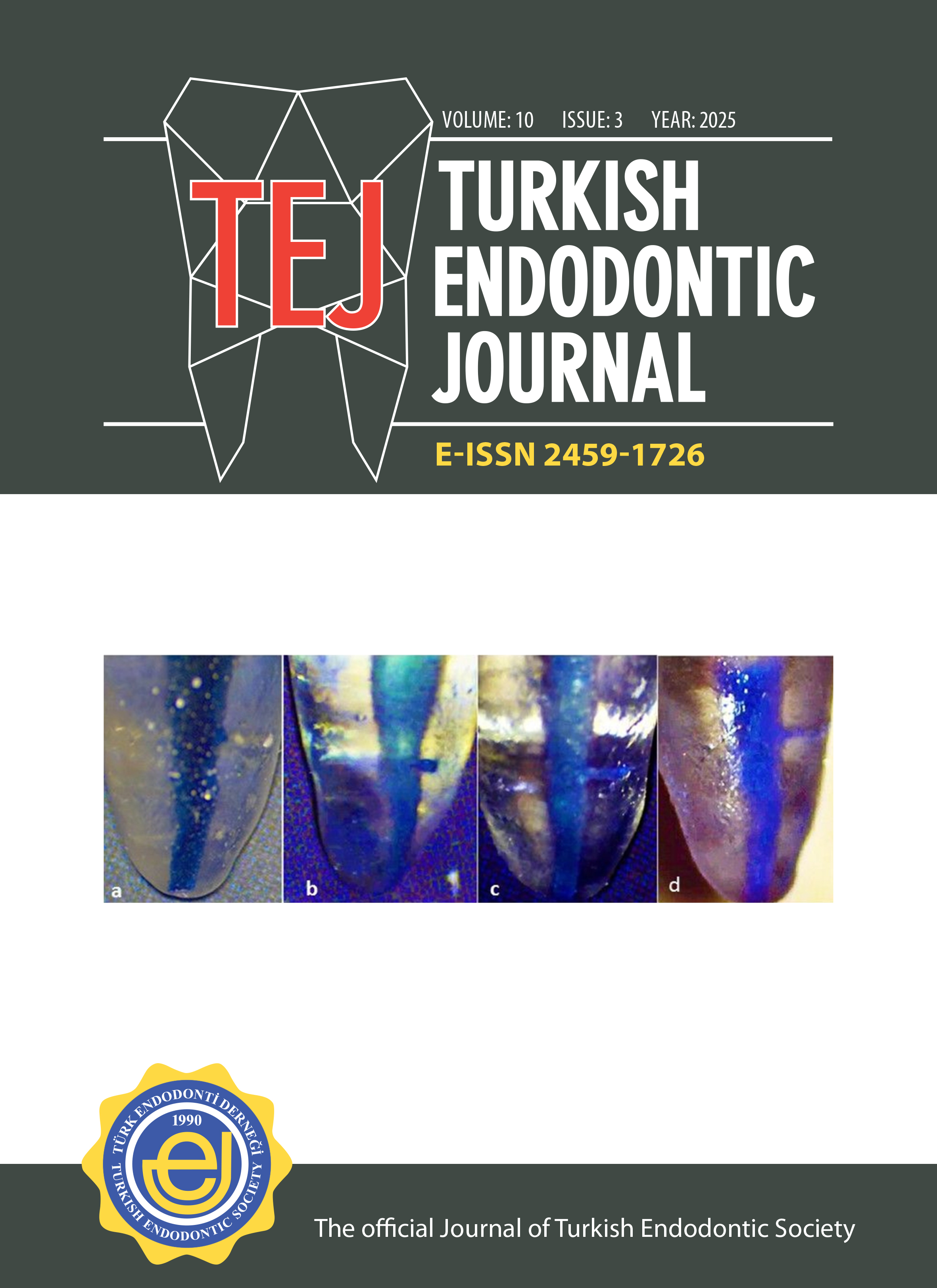Evaluation of the effect of different pediatric rotary file systems used in canal shaping of primary teeth on apical debris extrusion
Büşra Karaağaç Eskibağlar, İrem İpekDepartment of Pediatric Dentistry, Fırat University, Elazığ, TürkiyePurpose: The aim of this study is to evaluate the apical debris extrusion after root canal preparation using different pediatric rotary file systems in mandibular second primary molars.
Methods: Forty mandibular second primary molars were used in this study. Teeth were randomly di-vided into four experimental groups for the shaping of their distal roots. Group (G)1: Hand files, G2: Endoart Pedo Blue, G3: M3 Immature Blue, and G4: AF Baby rotary file were used for root canal prepara-tion. The Myers and Montgomery model was used to measure the amount of apical debris by evaluating the pre- and post-weight of the Eppendorf tube. Data were analyzed using one-way analysis of variance and Tukey post-hoc tests (p < 0.05).
Results: Among all file systems, the highest apical debris extrusion was observed in the G1 (hand file) group, and the least apical debris extrusion was observed in the G4 (AF Baby) group. However, there was no statistically significant difference between the G2 (Endoart Blue), G3 (M3 Immature Blue), and G4 (AF Baby) groups (p > 0.05).
Conclusion: All shaping techniques used in the study resulted in apical debris extrusion.
Keywords: Debris extrusion, pediatric rotary endodontic files, primary teeth.
Manuscript Language: English



















